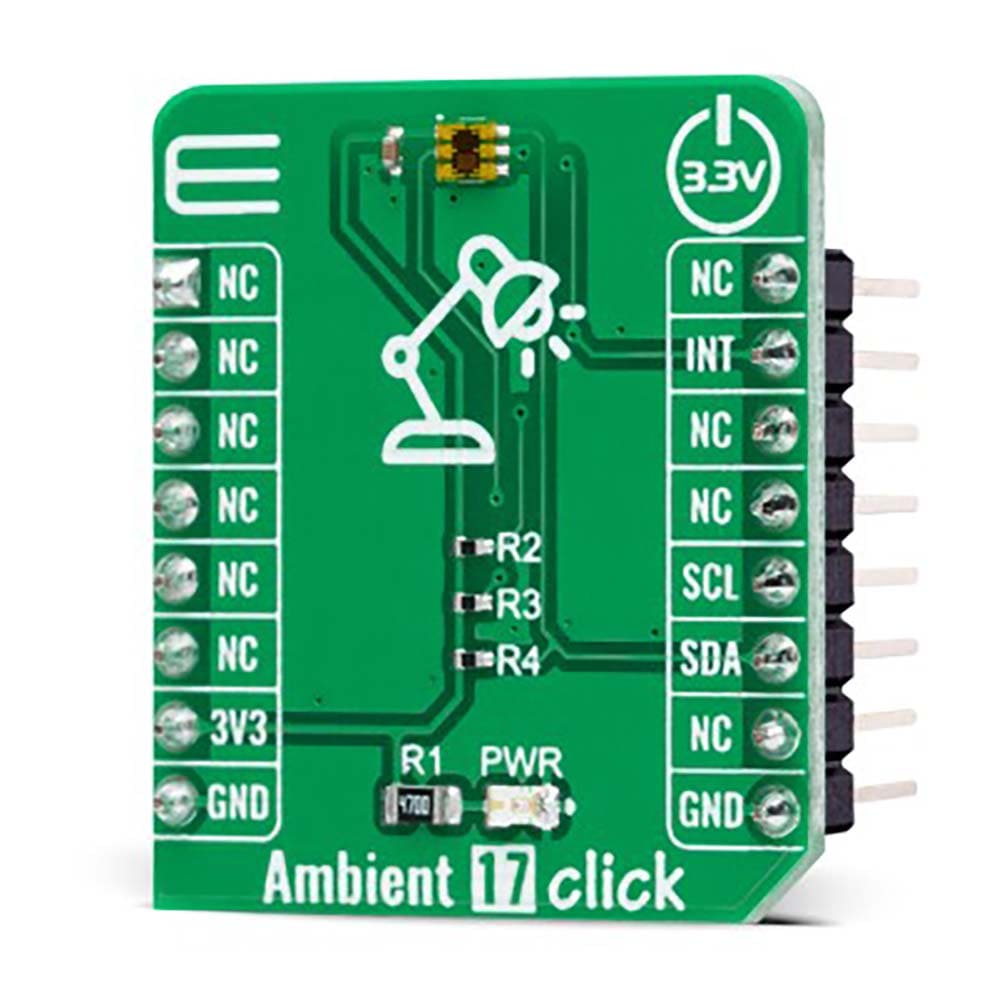
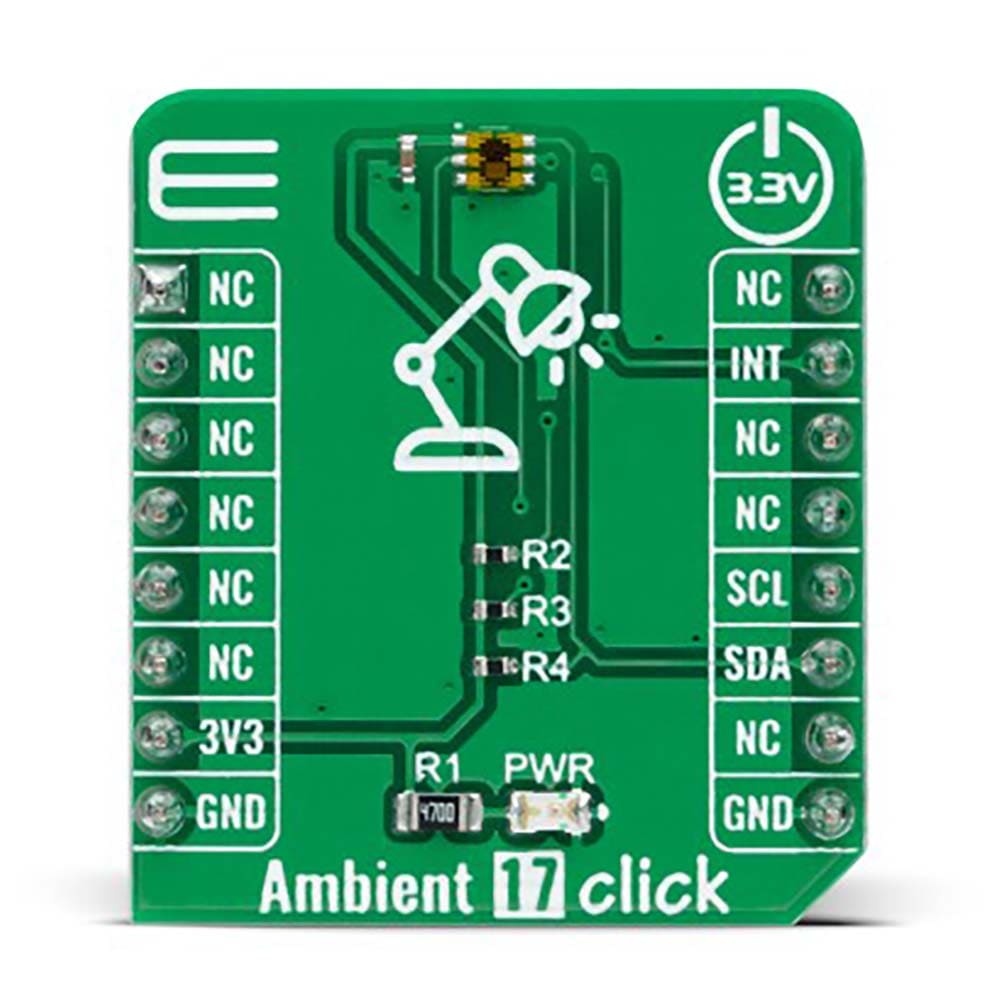
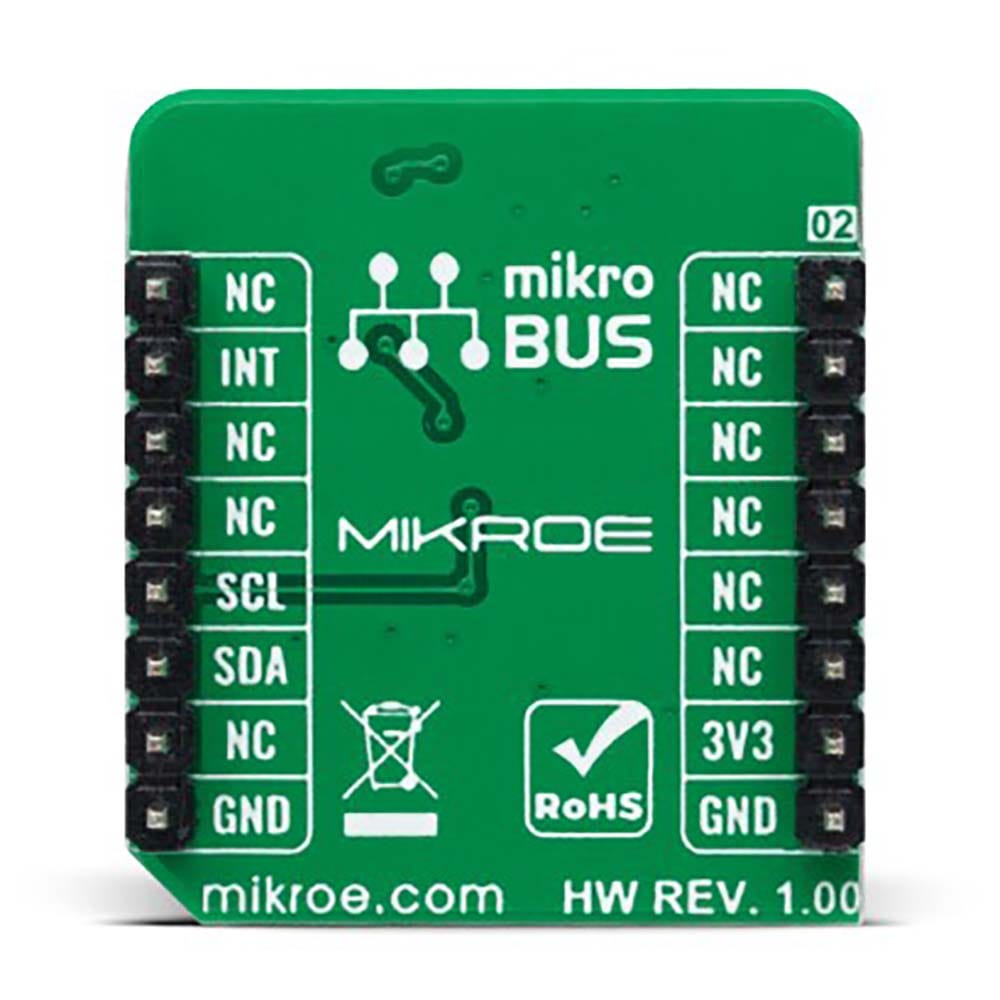

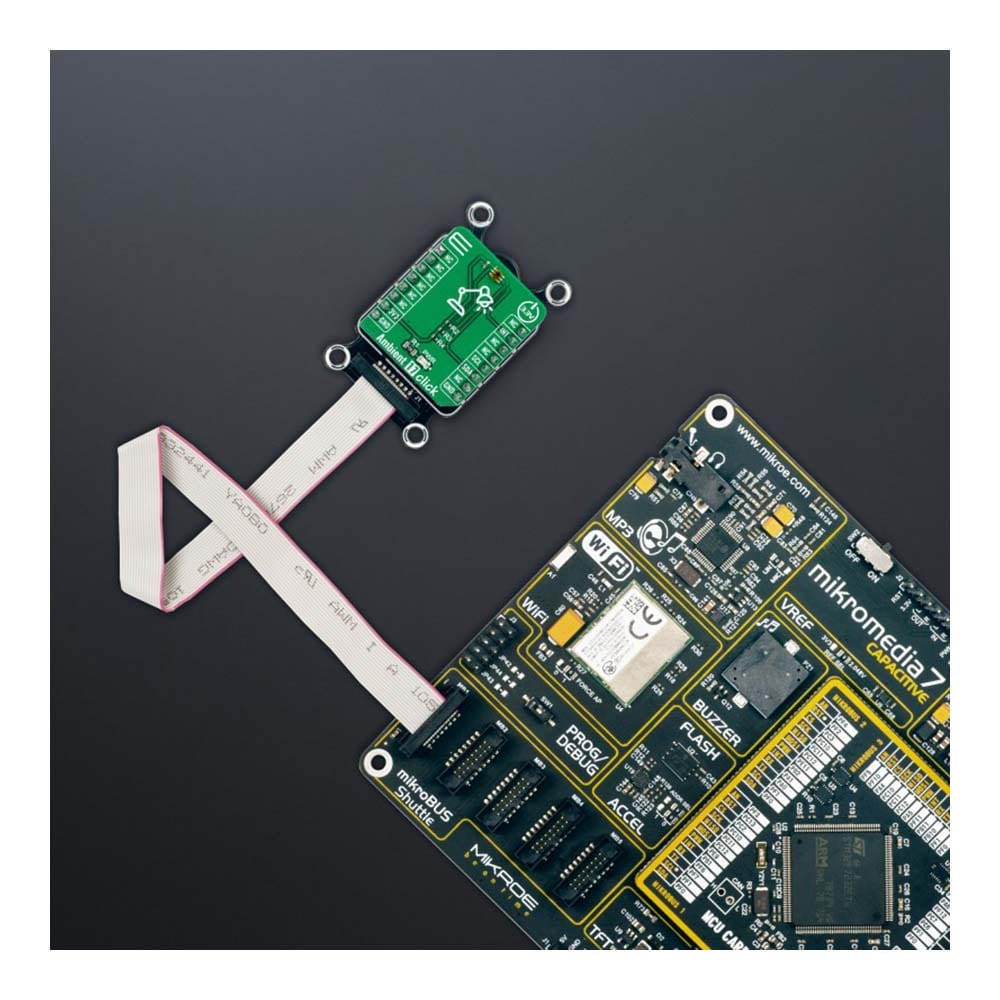
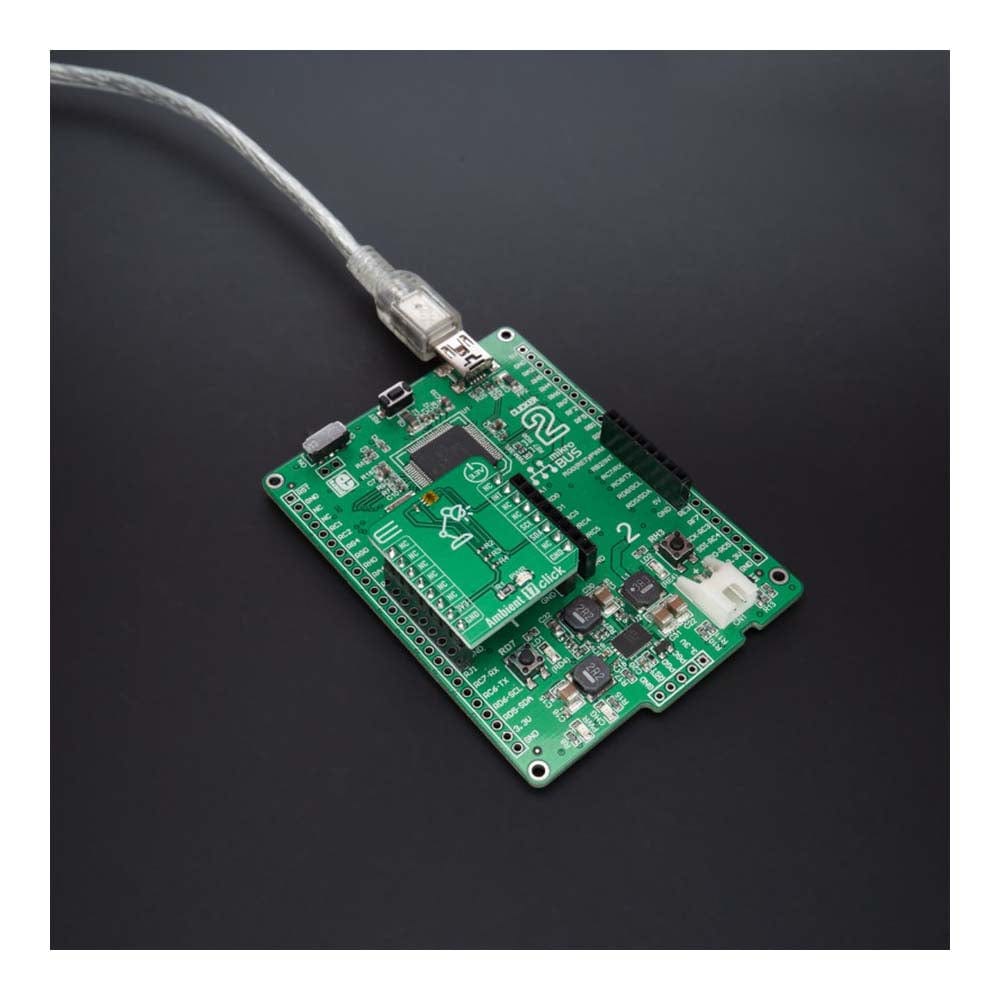

Key Features
Overview
The Ambient 17 Click Board™ is a compact add-on board used to measure the amount of the present ambient light. This board features the TSL2572, a digital-output ambient light sensor with an I2C interface from AMS AG. The TSL2572 can detect a wide range of illuminance up to 60klx and provides excellent responsivity close to the human eyes' response. It is designed to control the brightness in various applications based on ambient light availability, brightness for optimum visibility, and energy efficiency. Operation in a temperature range of -30°C to 70°C ensures stable operation under extreme conditions. This Click board™ is the most suitable for obtaining ambient light data for adjusting brightness in applications that require power saving and better visibility.
The Ambient 17 Click Board™ is supported by a mikroSDK compliant library, which includes functions that simplify software development. This Click board™ comes as a fully tested product, ready to be used on a system equipped with the mikroBUS™ socket.
Downloads
Das Ambient 17 Click Board™ ist eine kompakte Zusatzplatine zum Messen der Menge des vorhandenen Umgebungslichts. Diese Platine verfügt über den TSL2572, einen Umgebungslichtsensor mit digitalem Ausgang und einer I2C-Schnittstelle von AMS AG. Der TSL2572 kann einen großen Bereich von Beleuchtungsstärken bis zu 60 kLx erkennen und bietet eine ausgezeichnete Reaktionsfähigkeit, die der Reaktion des menschlichen Auges nahe kommt. Es wurde entwickelt, um die Helligkeit in verschiedenen Anwendungen basierend auf der Verfügbarkeit von Umgebungslicht, der Helligkeit für optimale Sichtbarkeit und der Energieeffizienz zu steuern. Der Betrieb in einem Temperaturbereich von -30 °C bis 70 °C gewährleistet einen stabilen Betrieb unter extremen Bedingungen. Dieses Click Board™ ist am besten geeignet, um Umgebungslichtdaten zum Anpassen der Helligkeit in Anwendungen zu erhalten, die Energieeinsparung und bessere Sichtbarkeit erfordern.
Das Ambient 17 Click Board™ wird von einer mikroSDK-kompatiblen Bibliothek unterstützt, die Funktionen enthält, die die Softwareentwicklung vereinfachen. Dieses Click Board™ wird als vollständig getestetes Produkt geliefert und ist bereit für den Einsatz auf einem System, das mit der mikroBUS™-Buchse ausgestattet ist.
| General Information | |
|---|---|
Part Number (SKU) |
MIKROE-5106
|
Manufacturer |
|
| Physical and Mechanical | |
Weight |
0.02 kg
|
| Other | |
Country of Origin |
|
HS Code Customs Tariff code
|
|
EAN |
8606027388996
|
Warranty |
|
Frequently Asked Questions
Have a Question?
Be the first to ask a question about this.







